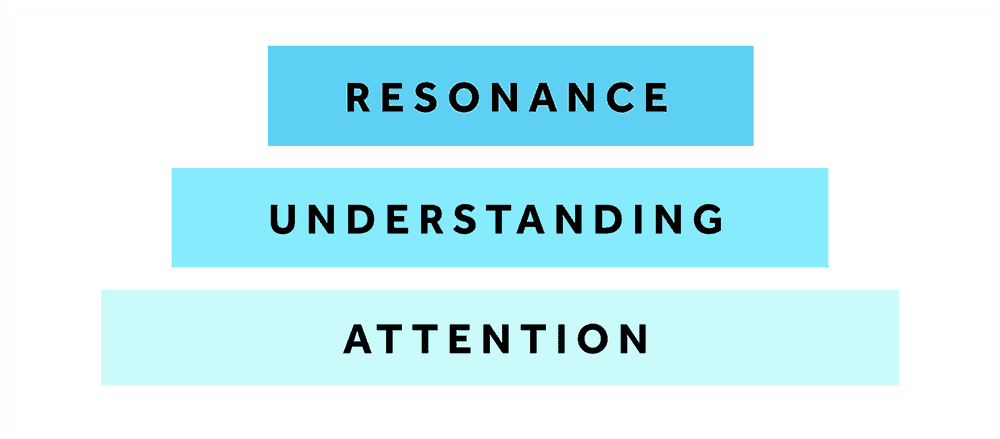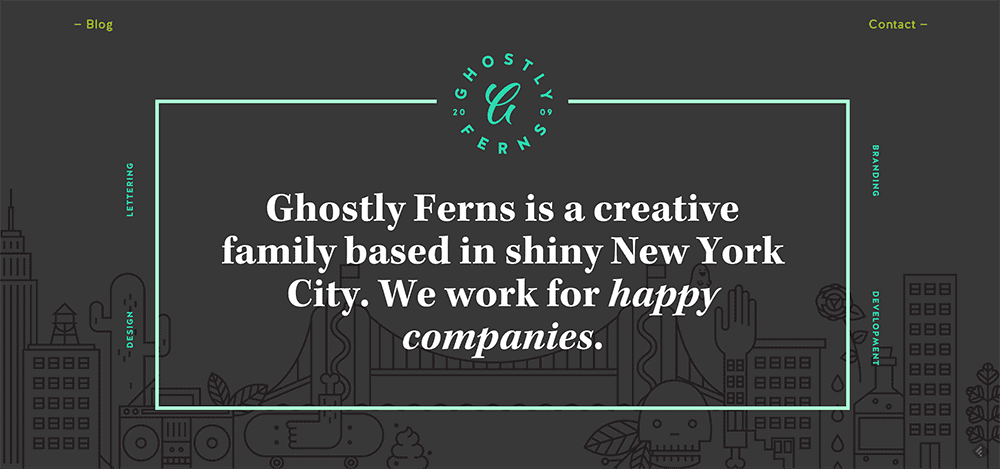Today’s post is a guest post from branding expert and good friend of The $100 MBA, Caroline Winegeart. Caroline has built one of the fastest growing brands we’ve seen with Made Vibrant, and for good reason…She knows her stuff. But more importantly she knows how to share her branding expertise in a language that us less artsy humans can understand. This is why we were happy to have Caroline share her kick-ass knowledge on branding with us in today’s post.
If you give this post a read and find you loved what you’ve learned then join Nicole and I as students in her latest course, The Better Branding Course. It just launched today! We’ll be taking the course ourselves as we are both working on building our own personal sites next month and know Caroline’s course will help make our sites amazing.
[divider style=”0″]
We all know that branding is a vital part of building a successful online business. Cohesive, modern branding helps lend credibility and professionalism to your online presence, which is key when you’re trying to get your name out there and start cultivating a community.
But, when does branding go beyond simply lending legitimacy to your business? What elements of branding actually have the power to move the needle when it comes to expanding your audience, or – even better – your revenue?
In my experience, I’ve found that three different factors lead to varying levels of effectiveness in brand design. They are attention, understanding and resonance.
But, the major catch here is that all three of these are NOT created equal. Each one conveys a different level of connection between your company and someone who comes across your brand, contributing to whether that person becomes a paying customer/client. (And we can all agree paying customers/clients is a very good thing, right? Right.)

Let’s dive into each factor, but first I want to paint a little picture for you.
Imagine you’re strolling through Times Square on a busy day. Every 20 feet or so you run into a different street performer, each one vying for your attention. Some are aggressive, some are boring, some are intriguing and others are just flat out entertaining.
The truth is, though, they all have the same goal in mind: to get you to stop walking, hang out for a while, and eventually to drop some cash into their hats.
Hmmm… stop, hang out for a while, and offer up some money. Sound familiar?
Yep, that’s online business in a nutshell, my friends.
Think about it. That’s all any of us is trying to do: go out there, put on our best show, and try to capture the hearts of people browsing the web so we can create a profitable business.
Now, as any good street performer knows, if you’re going to get someone to give you a few bucks, you’re first going to need them to stop walking and pay attention.
Which brings me to our first factor:
- Attention
If branding was a video game, Attention would be Level One. (Yep, for those of you keeping track at home, that’s street performers and video games. What can I say? I’m trying to keep it interesting for ya!)
It’s no secret that, as a culture, our attention spans are as fleeting as ever, and if you have any hope of building an audience, you first have to get on their radar. The mission of Level One is to use your brand to simply stand out in the sea of your competitors.
I love how Seth Godin defines the term “brand” on his blog:
“A brand is the set of expectations, memories, stories and relationships that, taken together, account for a consumer’s decision to choose one product or service over another.”
Inherently in his definition, Seth implies that the whole point of developing a brand is to rise above your competitors. But to do that, you first have to be seen.
This means doing research. Take a look at the competitive landscape in your industry. In what ways are they zigging that you could be zagging?
Be careful, though. Make sure that whatever branding you develop comes from an authentic place, not just an interest in standing out from the pack. Don’t drench your site in neon colors just because you don’t see anyone else in your category doing it. If you do that and you’re a watercolor artist that sells pastel florals, your brand is going to feel dissonant with your business foundation. On the other hand, if you’re a fun and energetic resource shop for creatives with vibrant in your brand name, it just might work.
When Omar and Nicole started The $100 MBA, they did so with the belief that they could challenge the norm when it comes to business education. The advice they give is practical and energetic. That mix of rebelliousness (challenging the norm) and energy/enthusiasm brings an underlying authenticity to their red, black and white brand color palette.
Here are some questions to ask yourself if you’re trying to achieve attention:
- Does my branding stand out in a lineup of similar businesses in my category or niche?
- Would I stick around if I stumbled across a site like mine?
Now, The only problem with striving for a brand that only aims to garner attention is that it’s fleeting. A flashy street performer might be able to make you stop for five minutes to watch, but unless there’s something to keep you there, then you’ll eventually just move on, right? If you’re only attempting to gain attention, it’s likely that whatever traffic you do manage to get will come and go.
Which brings me to the next level of branding achievement: understanding.
2. Understanding
Once you have the attention of someone, if you want any hope of keeping them engaged for the long haul, you’re going to have to effectively communicate what you do. Great branding should be designed to reinforce and support your company’s message. You can use elements in your brand identity to give contextual clues to your audience, letting them quickly decipher what your business is and if it might be for them.
Take Evernote, for example. I love the elephant icon in their logo because it reinforces the original purpose of their product, which is to help you keep track of and remember things. Though someone might not make the connection right away, if they see the logo in context, the elephant image is a memorable icon that supports the understanding of their product.

Branding not only has the power to enhance understanding of a product, it can also lead to a deeper understanding of a company’s differentiator (which is especially useful for a service-based company.)
Take the design studio, Ghostly Ferns, for example, a creative studio that declares on its website that it’s “Not your average design studio” and they only work with “happy companies.”
Aside from the large and direct brand statements, as a visitor to the website,

I immediately notice that the branding is unexpected and whimsical. Not only have they grabbed my attention with a distinct, inspired brand, but now I understand that their aesthetic and differentiator is the unconventional nature of their designs and the value they place on friendly client relationships. The branding reinforces the communication, and if I leave the site, I walk away with a deeper insight into what their business is about.
Some questions to ask yourself if you’re trying to achieve understanding:
- Does my brand have a tone or energy that is aligned with the basic facets of my business (who I’m trying to target, what my focus is, what I believe in?)
- Does my brand identity offer any clues as to what my business is about or who it’s for?
Attention and understanding can be powerful, but I would argue that most of the time neither one is enough to ensure that a passerby converts into a customer, or better yet, a fan.
So, then, what turns a person from a casual visitor into a customer, a client, or a brand advocate? What makes the person in Times Square throw their fiver into a street performer’s hat, or – what’s even more powerful – go tell their friends about the experience they had with that one special performer.
The answer is resonance.
3. Resonance
You did it! You’ve made it to the final level of effective branding and if you can tackle the Boss – Brand Resonance – then you win the ultimate reward: a brand advocate.
Resonance is all about going a step beyond speaking to someone’s mind and instead, speaking straight to their heart and their soul.
As Simon Sinek poignantly said in his TEDx talk, Start With Why, “People don’t buy what you do, they buy WHY you do it.”
After working with dozens of branding clients – from solopreneurs to large marketing companies – one thing has become clear to me: crafting a powerful brand story is the first step in connecting with your brand’s true fans.
Just to be clear, when I say “brand story” I’m referring to the unique narrative that conveys the heart and soul of your business. I like to think of brand story as the melting pot of answers to all those important, juicy, deeply-rooted questions about your business and what it stands for.
Questions like:
- What does your business believe in?
- Why did you get started?
- Who are you passionate about serving and why?
- Why do you get up every morning excited about your business?
Every place and way that you communicate that narrative – whether it’s through your brand identity (your logo, color palette, photography, typography, etc.), your copy, or an event experience – is an opportunity to make an emotional connection with a potential customer or client.
But, in order for brand resonance to occur, you have to invest the time in understanding what your beliefs and values are as a business. You have to know what you stand for and bake that into your brand. That’s what will give you the power to create lasting members of your tribe.
For example, my business, Made Vibrant, is based on the belief that when we show up as our truest, most vibrant selves, the world is a better place. It’s an imperfect process, but it’s about the growth we all experience along the way. This underlying belief is reflected in the bright and vibrant colors of my brand, and the emphasis on imperfect process comes through in the hand-drawn elements seen throughout my branding. Those visuals, coupled with the direct, mission-driven copy, were intentionally created to resonate with creatives that are motivated to grow.
I can’t tell you how many emails I’ve received with sentences like:
“It’s like you were talking right to me!”
“I found Made Vibrant at the perfect time!”
“This is exactly what I needed.”
That is the exact kind of response you’re aiming for.
Resonance gets you an engaged audience and an engaged audience gets you clients, sales and revenue. Not only will people stick around to hear what you have to say, they’re going to buy, and – even better – they’re going to tell their friends to check you out too.
So, let’s recap.
There’s attention (“Ohh, look at that.”)
There’s understanding (“Ohh, I see what that company does.”)
Then there’s resonance. (“Ohhh, that company is talking to ME.”)
Remember, branding isn’t JUST about your logo or the fonts you choose for your website. It’s the sum of every tangible and intangible connection someone has with your business.
Most branding – even good branding – stops at levels one or two of this list. Good branding is well-designed, professional, and aids in the communication of what a company does. But excellent branding? Excellent branding transcends attention and understanding and hits you right in the heart.
I encourage you to take a look at your own branding and see where you stack up against each of these three levels.
If you’re dressed as a break-dancing grandma in Times Square, sure, I’ll probably stop for five minutes to watch you dance.
BUT, if you’re dressed as a break-dancing grandma in Times Square with a big photo of your own grandma beside you, wearing her track suit because she loved to dance and back in her heyday she taught you everything you know about break-dancing… well then HECK YEAH I’m going to give you my money. And HECK YEAH I’m going to remember you AND tell my friends about you because I love my grandma and she taught me things too.
Resonance, my friends. That is when your branding will truly start to move the needle.
[divider style=”0″]
 Caroline is the brand designer, artist and writer behind the online resource shop, Made Vibrant. She creates relatable learning resources for creative entrepreneurs. Her latest e-course, Better Branding Course, teaches solopreneurs how to DIY their own powerful, authentic branding at a fraction of the cost of a custom branding package. You can check out the details by clicking here.
Caroline is the brand designer, artist and writer behind the online resource shop, Made Vibrant. She creates relatable learning resources for creative entrepreneurs. Her latest e-course, Better Branding Course, teaches solopreneurs how to DIY their own powerful, authentic branding at a fraction of the cost of a custom branding package. You can check out the details by clicking here.
Start your escape plan today, with our free business building starter pack.
Free newsletter. No spam. Unsubscribe any time.

